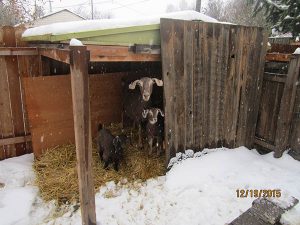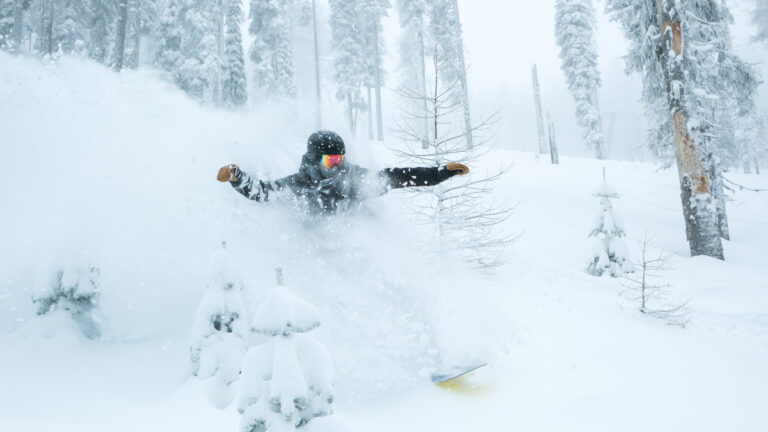Giving directions to her house in the Shadle neighborhood, Janice Swagerty says, “you can’t miss it; it’s very farm.” The raised garden beds and fruit trees in the front yard are part of that equation, but the real urban-meets-rural moment happens when you step into the backyard and are greeted by two goat pens and a chicken coop that house three chickens, two adult goats, and two goat kids.
Thanks to a change in the city regulations governing small livestock in April 2014, Swagerty and other aspiring urban farmers now have the city’s approval to raise certain breeds of goats, pigs, and sheep on their property. Chickens were already allowed prior to passage of the livestock ordinance, but the new law set more generous limits on the number of chickens a property owner can legally raise, affixing that figure to square footage. A property owner can now raise one chicken per 1,000 square feet or one small livestock animal per 2,500 square feet. A separate ordinance known as the “market garden pilot program” allows property owners to raise and sell produce directly from their property.
The ordinance regulates the size of livestock a landowner can rear (no more than three feet high at the shoulder, according to Pat Munts, Small Farms and Acreage Coordinator for WSU Spokane County Extension). The ordinance also stipulates that small livestock owners living in city limits must take a class that fully explains the regulations and proper care of small livestock. The Community Colleges Center for Workforce and Continuing Education and the WSU Spokane County Extension offer periodic classes on goat-keeping and pig-keeping.

The urban farming regulations were in large part driven by City Council President Ben Stuckart, who had seen a successful market garden program operating in Bellingham. The Bellingham program not only generated income for participants, but it also created a sense of community for neighborhoods as neighbors grew and sold vegetables and flowers to one another. Stuckart enlisted various community groups with a stake in urban agriculture in crafting the ordinances, making sure considerations such as impact on surrounding neighbors, proper care of animals, and other applicable city laws were considered in writing Spokane’s regulations.
In the two years since the ordinances passed, Munts says about 50 people have taken the small livestock classes required to raise animals, though stats on the number of people actually employing the ordinances to create their own urban farms aren’t available yet. Despite concern that nearby residents might be bothered by the smells and sounds of having hooved neighbors, both Munts and Stuckart say city complaints related to livestock animals have been minimal.
Swagerty affirms that neighbor relations are key to making an urban farm work in the midst of a residential neighborhood. “There’s a learning curve,” she says, relating how the first pen she had in her backyard was positioned in such a way that the farmy odor of her goats blew into her neighbor’s yard. Swagerty chose to relocate her pen to make sure her goats were a welcome addition to the neighborhood. But the goats have been a great source of community building for Swagerty as well; her neighbors donate their rogue weeds to Swagerty’s goats for supper, and who wouldn’t delight in the sight of her 13-year-old daughter Katie hooking up their buck goat to a sled to pull her through the snow on a winter day? For urban dwellers with a country heart, Spokane’s urban farming ordinances make it possible to have it all. // (Jamie Borgan)













